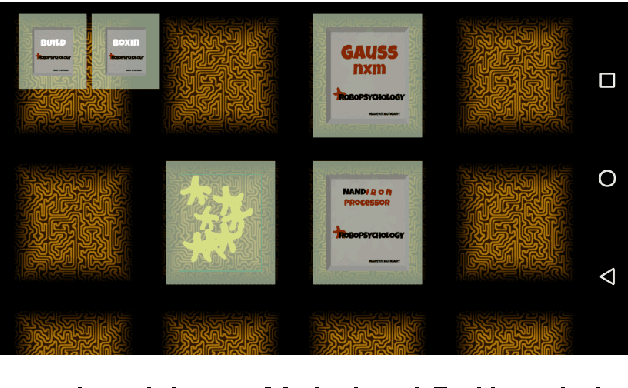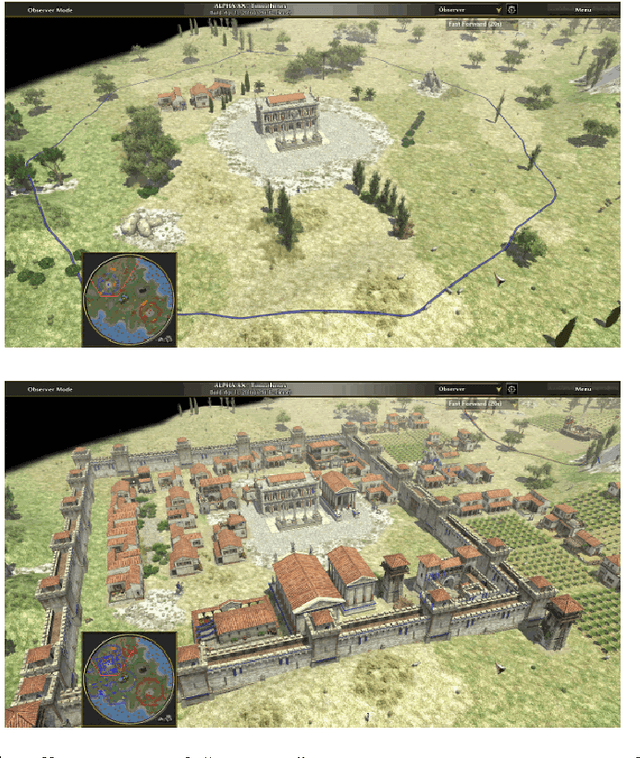Norbert Bátfai
Hacking with God: a Common Programming Language of Robopsychology and Robophilosophy
Sep 16, 2020



Abstract:This note is a sketch of how the concept of robopsychology and robophilosophy could be reinterpreted and repositioned in the spirit of the original vocation of psychology and philosophy. The notion of the robopsychology as a fictional science and a fictional occupation was introduced by Asimov in the middle of the last century. The robophilosophy, on the other hand, is only a few years old today. But at this moment, none of these new emerging disciplines focus on the fundamental and overall issues of the development of artificial general intelligence. Instead, they focus only on issues that, although are extremely important, play a complementary role, such as moral or ethical ones, rather than the big questions of life. We try to outline a conception in which the robophilosophy and robopsychology will be able to play a similar leading rule in the progress of artificial intelligence than the philosophy and psychology have done in the progress of human intelligence. To facilitate this, we outline the idea of a visual artificial language and interactive theorem prover-based computer application called Prime Convo Assistant. The question to be decided in the future is whether we can develop such an application. And if so, can we build a computer game on it, or even an esport game? It may be an interesting question in order for this game will be able to transform human thinking on the widest possible social scale and will be able to develop a standard mathematical logic-based communication channel between human and machine intelligence.
Large-scale Analysis and Simulation of Traffic Flow using Markov Models
Jul 06, 2020



Abstract:Modeling and simulating movement of vehicles in established transportation infrastructures, especially in large urban road networks is an important task. It helps with understanding and handling traffic problems, optimizing traffic regulations and adapting the traffic management in real time for unexpected disaster events. A mathematically rigorous stochastic model that can be used for traffic analysis was proposed earlier by other researchers which is based on an interplay between graph and Markov chain theories. This model provides a transition probability matrix which describes the traffic's dynamic with its unique stationary distribution of the vehicles on the road network. In this paper, a new parametrization is presented for this model by introducing the concept of two-dimensional stationary distribution which can handle the traffic's dynamic together with the vehicles' distribution. In addition, the weighted least squares estimation method is applied for estimating this new parameter matrix using trajectory data. In a case study, we apply our method on the Taxi Trajectory Prediction dataset and road network data from the OpenStreetMap project, both available publicly. To test our approach, we have implemented the proposed model in software. We have run simulations in medium and large scales and both the model and estimation procedure, based on artificial and real datasets, have been proved satisfactory. In a real application, we have unfolded a stationary distribution on the map graph of Porto, based on the dataset. The approach described here combines techniques whose use together to analyze traffic on large road networks has not previously been reported.
On the notion of number in humans and machines
Jun 27, 2019



Abstract:In this paper, we performed two types of software experiments to study the numerosity classification (subitizing) in humans and machines. Experiments focus on a particular kind of task is referred to as Semantic MNIST or simply SMNIST where the numerosity of objects placed in an image must be determined. The experiments called SMNIST for Humans are intended to measure the capacity of the Object File System in humans. In this type of experiment the measurement result is in well agreement with the value known from the cognitive psychology literature. The experiments called SMNIST for Machines serve similar purposes but they investigate existing, well known (but originally developed for other purpose) and under development deep learning computer programs. These measurement results can be interpreted similar to the results from SMNIST for Humans. The main thesis of this paper can be formulated as follows: in machines the image classification artificial neural networks can learn to distinguish numerosities with better accuracy when these numerosities are smaller than the capacity of OFS in humans. Finally, we outline a conceptual framework to investigate the notion of number in humans and machines.
Entropy Non-increasing Games for the Improvement of Dataflow Programming
Feb 14, 2017



Abstract:In this article, we introduce a new conception of a family of esport games called Samu Entropy to try to improve dataflow program graphs like the ones that are based on Google's TensorFlow. Currently, the Samu Entropy project specifies only requirements for new esport games to be developed with particular attention to the investigation of the relationship between esport and artificial intelligence. It is quite obvious that there is a very close and natural relationship between esport games and artificial intelligence. Furthermore, the project Samu Entropy focuses not only on using artificial intelligence, but on creating AI in a new way. We present a reference game called Face Battle that implements the Samu Entropy requirements.
Theoretical Robopsychology: Samu Has Learned Turing Machines
Jun 23, 2016



Abstract:From the point of view of a programmer, the robopsychology is a synonym for the activity is done by developers to implement their machine learning applications. This robopsychological approach raises some fundamental theoretical questions of machine learning. Our discussion of these questions is constrained to Turing machines. Alan Turing had given an algorithm (aka the Turing Machine) to describe algorithms. If it has been applied to describe itself then this brings us to Turing's notion of the universal machine. In the present paper, we investigate algorithms to write algorithms. From a pedagogy point of view, this way of writing programs can be considered as a combination of learning by listening and learning by doing due to it is based on applying agent technology and machine learning. As the main result we introduce the problem of learning and then we show that it cannot easily be handled in reality therefore it is reasonable to use machine learning algorithm for learning Turing machines.
A disembodied developmental robotic agent called Samu Bátfai
Nov 09, 2015



Abstract:The agent program, called Samu, is an experiment to build a disembodied DevRob (Developmental Robotics) chatter bot that can talk in a natural language like humans do. One of the main design feature is that Samu can be interacted with using only a character terminal. This is important not only for practical aspects of Turing test or Loebner prize, but also for the study of basic principles of Developmental Robotics. Our purpose is to create a rapid prototype of Q-learning with neural network approximators for Samu. We sketch out the early stages of the development process of this prototype, where Samu's task is to predict the next sentence of tales or conversations. The basic objective of this paper is to reach the same results using reinforcement learning with general function approximators that can be achieved by using the classical Q lookup table on small input samples. The paper is closed by an experiment that shows a significant improvement in Samu's learning when using LZW tree to narrow the number of possible Q-actions.
Turing's Imitation Game has been Improved
Sep 02, 2015



Abstract:Using the recently introduced universal computing model, called orchestrated machine, that represents computations in a dissipative environment, we consider a new kind of interpretation of Turing's Imitation Game. In addition we raise the question whether the intelligence may show fractal properties. Then we sketch a vision of what robotic cars are going to do in the future. Finally we give the specification of an artificial life game based on the concept of orchestrated machines. The purpose of this paper is to start the search for possible relationships between these different topics.
Are there intelligent Turing machines?
Mar 12, 2015



Abstract:This paper introduces a new computing model based on the cooperation among Turing machines called orchestrated machines. Like universal Turing machines, orchestrated machines are also designed to simulate Turing machines but they can also modify the original operation of the included Turing machines to create a new layer of some kind of collective behavior. Using this new model we can define some interested notions related to cooperation ability of Turing machines such as the intelligence quotient or the emotional intelligence quotient for Turing machines.
Conscious Machines and Consciousness Oriented Programming
Aug 14, 2011



Abstract:In this paper, we investigate the following question: how could you write such computer programs that can work like conscious beings? The motivation behind this question is that we want to create such applications that can see the future. The aim of this paper is to provide an overall conceptual framework for this new approach to machine consciousness. So we introduce a new programming paradigm called Consciousness Oriented Programming (COP).
The Socceral Force
Apr 22, 2010



Abstract:We have an audacious dream, we would like to develop a simulation and virtual reality system to support the decision making in European football (soccer). In this review, we summarize the efforts that we have made to fulfil this dream until recently. In addition, an introductory version of FerSML (Footballer and Football Simulation Markup Language) is presented in this paper.
 Add to Chrome
Add to Chrome Add to Firefox
Add to Firefox Add to Edge
Add to Edge